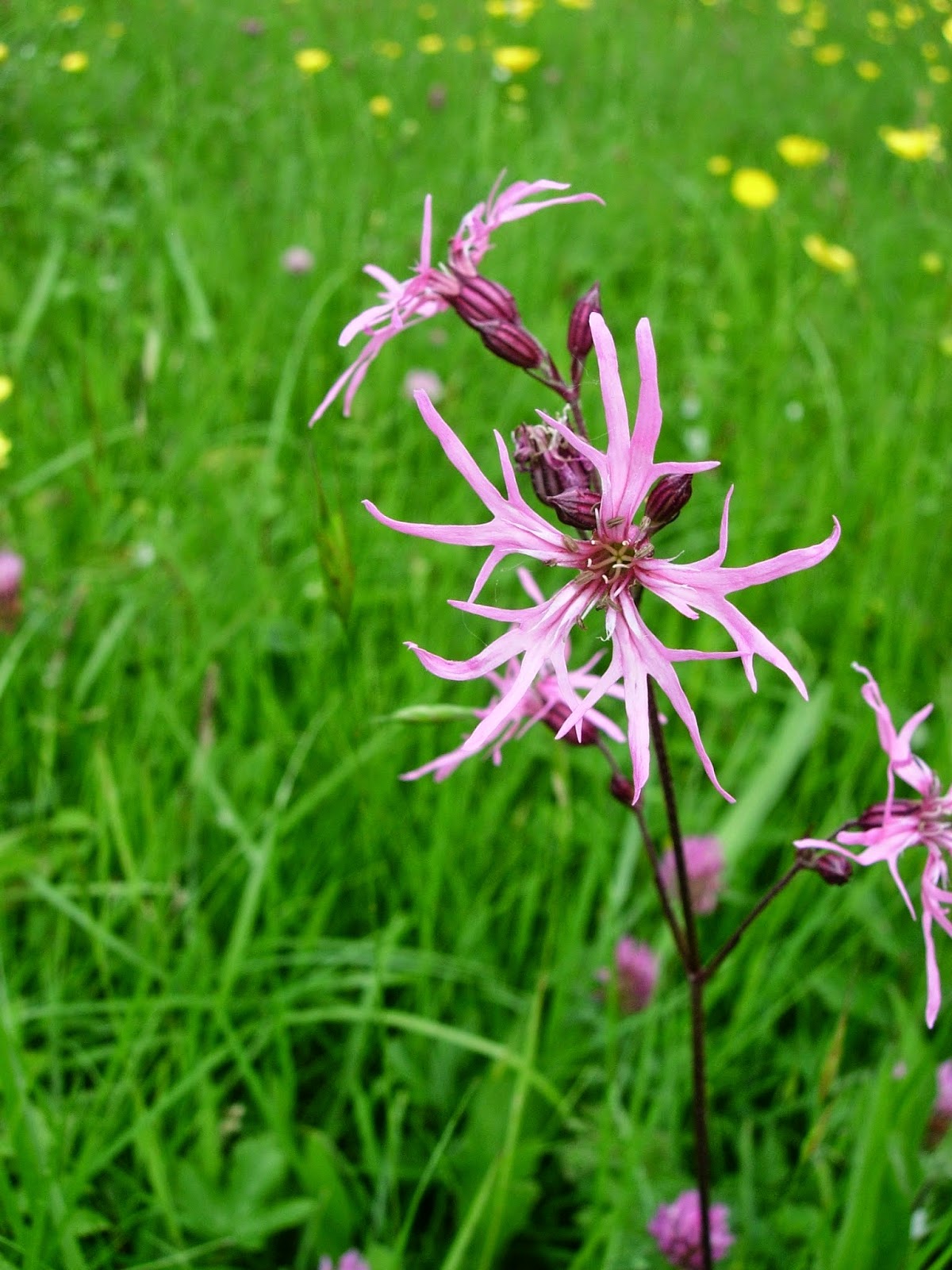 The month of June sees the hay meadow grasses all racing into bloom. Walks through the meadows are accompanied by clouds of pollen being carried on the breeze. My dog Ellie's face is lightly dusted pink and yellow with pollen and grass anthers and we both frequently sneeze.
The month of June sees the hay meadow grasses all racing into bloom. Walks through the meadows are accompanied by clouds of pollen being carried on the breeze. My dog Ellie's face is lightly dusted pink and yellow with pollen and grass anthers and we both frequently sneeze.Many of grasses have English names that reflect both their habitat and appearance . 'Hay' grasses often include 'meadow' in the name such as meadow barley, smooth meadow grass and meadow fescue. Sweet vernal grass, reflects it early flowering and the sweet taste and scent it contributes to hay. Some reflect their resemblance to other farm crops and farm animals such as false oat grass, yellow oat grass and cock's foot (right). Yellow oat grass catches the light 'illuminating' parts of the meadow just as gold-leaf illuminates manuscripts.
Other grass are named after tails various. Meadow foxtail (below left) acquires the two tone rusty colour and white tip of a fox's tail as it flowers.

Small cat's tail (right) does indeed look like a cat's tail - though whether small
refers to the size of the cat, tail or grass is open to debate!
Crested dog's tail (below centre) resembles the tail of a dog, but again I'm not sure which is crested - the dog or the grass? Ellie's tail is much closer in appearance to the meadow foxtail and if she ever goes exploring in this grass her her tail is well camouflaged.






